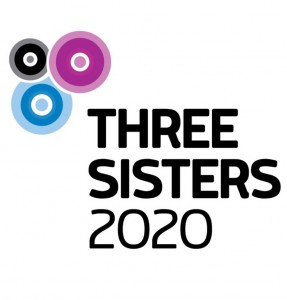
Three Sisters bid should not become a wasted opportunity
So Galway will be the European Capital of Culture in 2020. But where does that leave Waterford? Will the regional ‘love-in’ go back to some sort of historical distrust of each other? Your guess is as good as mine, and what could have been a significant advance in regional planning will probably drift back into polite social and cultural exchange papers. Political jargon, I suspect, will prevail, and there will be a bit of blame and finger-pointing with veiled recrimination about how the Bid Documents were structured and how the budget was decided.
Bid Director Michael Quinn told this newspaper on Wednesday last: “At the moment we are following up on the expenditure for June and July and will have final figures in a few weeks.”
So we expect to get a final figure regarding expenditure on the ‘ECoC’ bid come early September.
Incidentally, the same query was sent to the Chief Executives of both Kilkenny and Wexford County Councils regarding the budget outlay from their perspectives but we’d yet to receive a reply at the time of writing.
Right now, it’s hard to know if there was adequate planning with respect to the amounts allocated, as such information is not easily obtained.
I attended the initial public meetings in all three counties but found it hard to get further information: it was quite a similar experience to the initial meetings in Dungarvan and Waterford about a new Arts Plan.
European data indicates that a serious bid costs from €600,000 to €800,000. Anecdotally, it’s believed Galway spent about €700,000 and had long-standing plans in place to budget for such expenditure.
It’s understood that Limerick wanted to limit expenditure to €300,000 and the Three Sisters have spent possibly, 400,000 euro with additional costs for Roadside signage.
It was obvious from the Galway documentation and from visits to Galway that a lot of planning and consultation went into their bid, and there was a sense of comprehensive, long-standing joined-up thinking about their pitch.
You only have to read the Galway Strategy Framework: ‘Everybody Matters (A Cultural Sustainability Strategy Framework For Galway 2016 – 2025)’ to see that – which is linked on my Facebook page.
By the way, and also on my Facebook page, is ‘Better Together: The Three Sisters Regional Cultural Strategy 2016 – 2025’. I genuinely believe that this region would be better together.
So let’s break things down a little.
The definition of Culture, as accepted by the Government is an all-embracing mix of arts, tourism, heritage, language, food, sport, etc. as outlined in the three bid documents. I think that decisions of this nature are more political than they should be.
After all, the previous Government decided that Limerick would be the National City of Culture, for which there had been no competition for.
The next National City of Culture was due to be awarded in 2018, but Minister Humphreys decided this wouldn’t go ahead as it was too close to the 2020 European Capital of Culture.
Galway’s bid theme was ‘Making waves – Landscape, Language, and Migration’ with a total budget of €45.75 million.
Key plans were to organise cultural events so as not to clash with existing Festivals (a tall order for Galway).
There was a quirky ‘Wires Crossed’, a risk-taking adventure to train people to tightrope walk over the River Corrib. The most controversial (laughable?) was Project Baa-Baa, a mini-festival to celebrate sheep. There is a completes list online.
Limerick’s theme was ‘Belonging’ with a total budget of €37 million. Among its key plans were ‘Bands Beyond Borders’. a musical project to add to existing International Band Championship, along with a ‘World Recipe Exchange’ – a celebration of food; ‘Culture and Chips’ (ethnic food store and stalls, invite-your-neighbour-meals, pop-up restaurants and a quirky food Carnival).
Other projects included ‘Limerick Sings’ and a young film maker’s project.
And so to the Three Sisters bid which was themed ‘Reimaging The European Region – Culture, Community and Sustainability Beyond The Urban’ with a €31 million budget.
Key aspects involved using the Suir, Nore and Barrow for several excellent projects with shared regional performances.
A clever ‘Cultural Prescription’ was to link GP practices to cultural events. I think Dr Mark Rowe, who is Chair of Garter Lane, has some great ideas on this front, ideas which should not be wasted.
There was also a ‘Station to Station’ project which would have focused on 18 abandoned or derelict railway stations as part of a bid to revitalise rural communities.
Many of the Three Sisters plans were new and perhaps lacked a cohesion because it wasn’t readily obvious (from the outside looking in) that open, cross county boundary co-operation was evident.
It was good to see aspects of collaboration between the three counties – Spraoi’s booklet lists Kilkenny Arts Festival and Wexford Festival Opera as Creative Partners while the Kilkenny Arts Festival brochure lists Spraoi and Three Sisters in its Cultural Partners section.
But while I like the idea of regional co-operation in some version of the ‘Better Together’ Strategy, I feel it would also require a Business, Tourism & Arts CEO as opposed to a rotating Local Authority executive.
Another point that might not favour Waterford’s arts interests is the fact that the Arts Council support major festivals in Wexford and Kilkenny, while Waterford City & County Council supports a lot more arts projects than the other two Councils.

